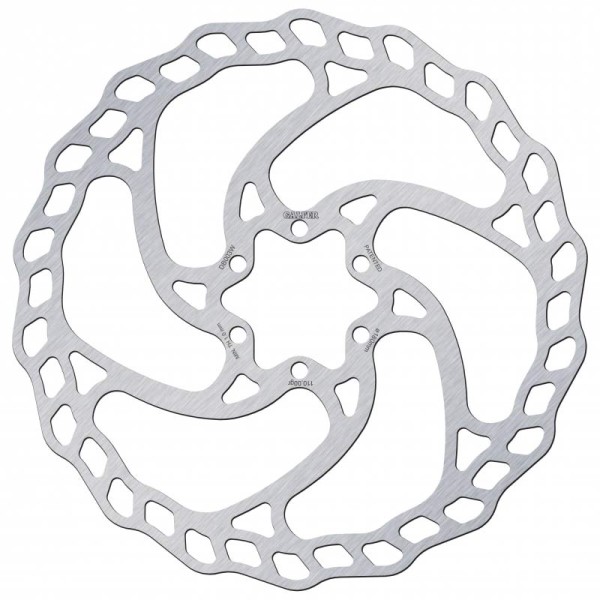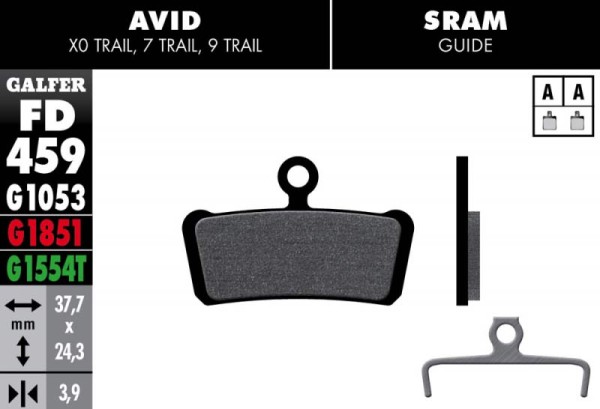Galfer is a Spanish company that’s been making brake pads since 1947, mostly for automotive and moto. Along the way, they branched into bicycle parts, where they’re better known in Europe with plenty of OEM placement. Now, they’re starting to make a name for themselves stateside.
Their Disc Wave rotors are made of a high carbon steel that’s laser cut and double circular ground. Visually, they look similar to Ashima’s featherweight rotors, but the thicker stalks and slightly smaller holes suggest there’s more material here to help capture and dissipate the heat, and they do claim heat management is excellent. The weights back that up, with them coming in 20g to 30g heavier than a comparably sized Ashima rotor…but they’re by no means heavy. The 160mm Galfer Wave rotor comes in at a claimed 99g, which is 14g lighter than the new SRAM Centerline rotors. So, they’re on the lighter side of normal, which makes them a good option for road and cyclocross, too.
The wave pattern is a patented design they created in the 90’s and refers to the outer edges’ wave-like pattern. They say it helps the rotor stay cleaner and cooler. They’re all made in Spain in Galfer’s own factory, too. They’re 1.8mm thick, and they say they remain quiet and vibration free, work great in dry and wet and have a corrosion resistant finish. The best part? Retail is just $30 to $35!
Now for the pads…
They’re offered in a wide range of sizes and options to fit brake calipers dating quite a ways back up to the latest and greatest. Brands covered include SRAM/Avid, Shimano, Hope, Magura, Hayes and Formula. Given that range and the fact that they’ve been making millions of brake pads for many years but not selling them aftermarket under their own brand, you can guess where those pads were going. There’s a chance you’re running them and don’t even know it.
Three different pad compounds are offered: Standard (black), Advanced (red) and Pro (green). The Standard models are intended for XC/Enduro use in normal conditions. The Advanced models are for any type of riding and geared a little more for foul weather conditions and more extreme conditions. The Pro models are for higher intensity braking applications (DH, aggressive enduro) and have more power at the end of the lever stroke, but aren’t quite as durable. All are formulated to run quiet and extend the life of the rotor. Here’s a little video showing how they stack up under prolonged use.
Assuming everything’s equal, it’s impressive how much cooler they kept the rotor and that they could still stop the wheel. For the U.S. market, they’re only brining the Standard (semi-metallic) and Pro (proprietary Kevlar-based material) pads to the warehouse. Retail is $15.95 and $29.95 respectively, so far available through BTI and JensonUSA and a few other smaller outlets.
For shops or teams, they make 60-count packs of the brake pads. You can get all 60 of the same thing, or a few combos of 20 each of three popular models. Check ’em out at Galfer.eu or GalferUSA.com.



